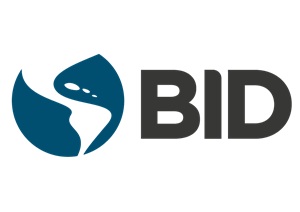 AcademiaBID | Cursos online | Amplía tus habilidades y conocimiento con todos nuestros recursos de aprendizaje
AcademiaBID | Cursos online | Amplía tus habilidades y conocimiento con todos nuestros recursos de aprendizaje
Econometría
Lentiviral vectors have emerged as a powerful tool in the field of gene therapy, providing a means to deliver genetic material into target cells effectively. Their unique ability to integrate into the host genome enables long-term expression of therapeutic genes, making them invaluable in treating various genetic disorders, cancers, and infectious diseases. To harness the full potential of lentiviral vectors, adhering to Good Manufacturing Practices (GMP) in their production is essential.
Understanding GMP
Good Manufacturing Practices refer to the regulatory requirements set forth by health authorities to ensure that products are consistently produced and controlled according to quality standards. In the context of lentiviral vector production, GMP guidelines encompass a range of practices, including quality assurance, risk management, and process validation, all aimed at ensuring the safety, quality, and efficacy of the final product.
The Production Process
The production of GMP-grade lentiviral vectors involves several critical steps:
Cell Line Development: Stable cell lines are developed to produce the viral vector. These cell lines must be characterized for their suitability, including assessing their ability to produce high-titer lentiviral vectors.
Transfection: The next step involves transfecting these producer cell lines with DNA plasmids containing the necessary components for lentiviral vector production. This includes plasmids encoding the lentiviral genome, envelope proteins, and any additional elements required for the vector’s functionality.
Production and Harvesting: Following transfection, the producer cells are cultured in bioreactors. During this phase, the cells will produce lentiviral particles, which are later harvested from the culture medium. It’s crucial to monitor parameters such as pH, temperature, and nutrient levels to optimize vector yield.
Purification: The harvested viral particles undergo purification to remove impurities, including cell debris and culture medium components. Various techniques, such as ultrafiltration and chromatography, are employed to achieve a high degree of purity.
Quality Control: Following purification, stringent quality control measures are implemented. This includes assessing the vector’s titer (concentration of viral particles), integrity of the viral genome, and absence of contaminants, such as endotoxins and residual plasmid DNA.
Regulatory Considerations
Navigating the regulatory landscape is a critical aspect of GMP lentiviral vector production. The process must comply with guidelines set by regulatory bodies such as the FDA and EMA. This involves maintaining comprehensive documentation throughout the production process, conducting rigorous validation studies, and engaging in regular audits to ensure compliance with GMP standards.
Applications in Medicine
The applications of GMP-produced lentiviral vectors are vast. They play a pivotal role in the development of advanced therapies for a variety of conditions. For instance, in oncology, lentiviral vectors are being investigated for their potential in delivering therapeutic genes that can selectively target and eliminate cancer cells. In the realm of genetic disorders, these vectors hold promise for correcting defective genes responsible for hereditary diseases.
Conclusion
GMP lentiviral vector production represents a critical component of the evolving gene therapy landscape. As research and clinical applications continue to expand, the need for high-quality, safe, and effective vector production becomes increasingly vital. By adhering to GMP guidelines, manufacturers can ensure that lentiviral vectors meet the strictest standards, ultimately facilitating the development of transformative therapies for patients around the world. The journey of lentiviral vectors from the laboratory to the clinic exemplifies the intersection of science, technology, and regulatory rigor, marking significant progress in the battle against genetic and acquired diseases.

